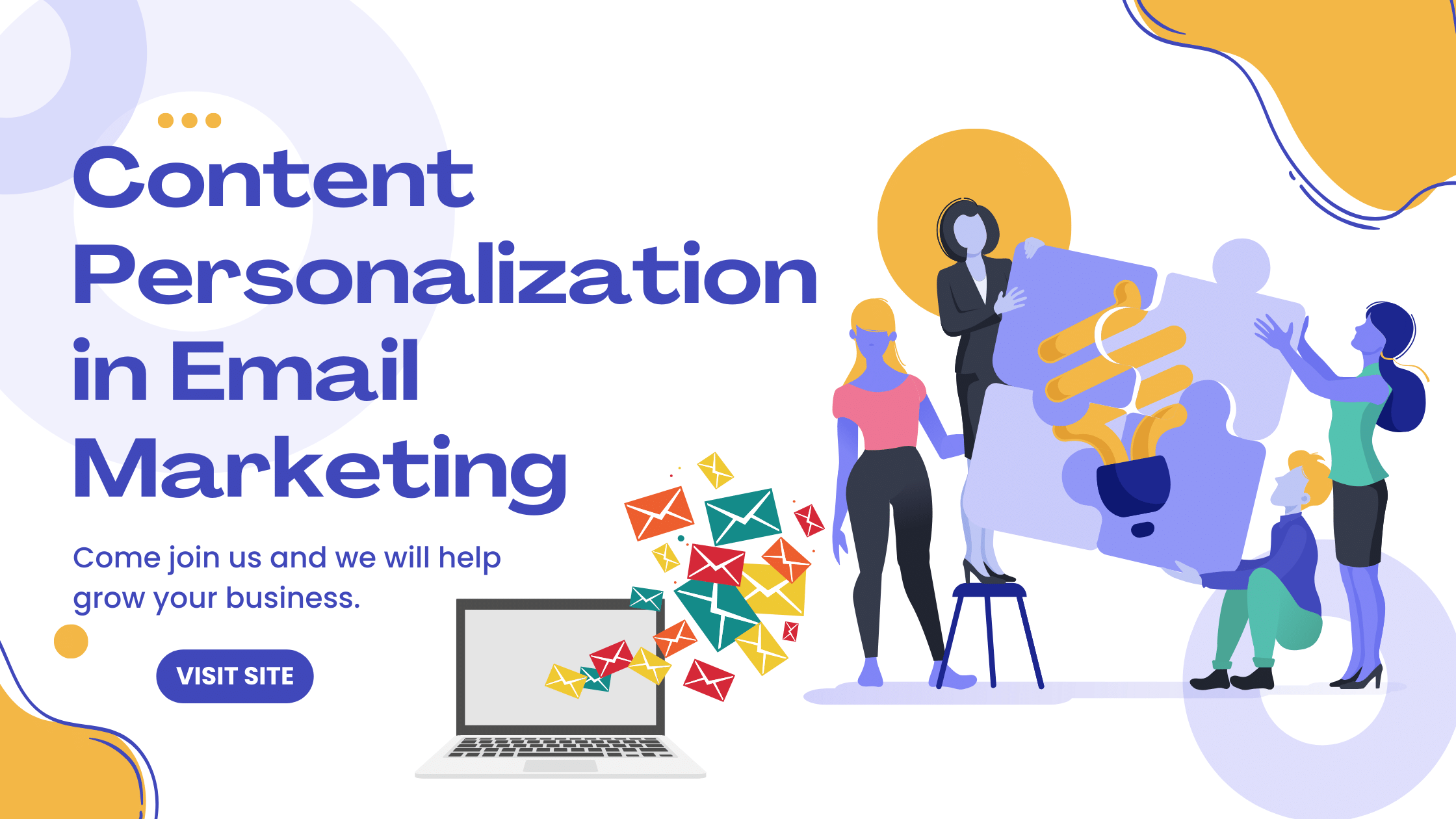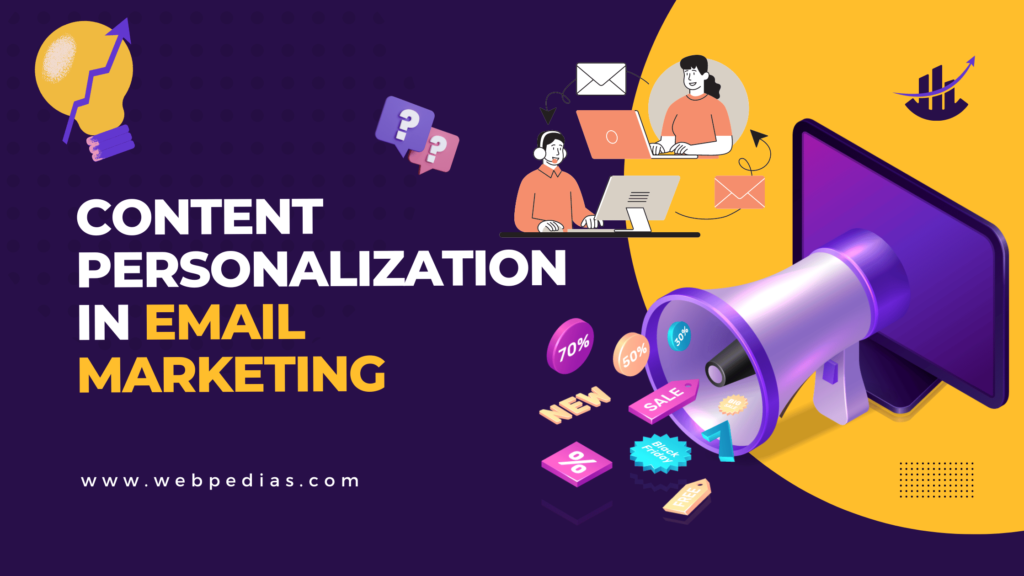Content Personalization in Email Marketing
In an age of information overload, email marketing stands out as a strong channel to reach and engage with your audience. However, the days of generic, one-size-fits-all email blasts are gone. Enter content personalization in email marketing – an approach that adapts your messages to individual recipients, making them more relevant, engaging and effective. In this comprehensive guide, we’ll dive deep into the art and science of content personalization, exploring why it matters, how to implement it, and what a powerful impact it can have on your email marketing campaigns.
Why content personalization matters
1. Enhanced Relevance
Personal Touch: Personalized emails strike a better chord with recipients by addressing their specific needs and interests.
Higher Open Rates: Relevant content increases email open rates.
2. Better Engagement
Click-through rates: Personalization often results in higher click-through rates (CTR) because recipients are more likely to act on tailored content.
Decrease unsubscribe: Relevant content makes recipients less likely to unsubscribe from your emails.
3. Better Customer Relations
Building trust: Personalized emails show that you understand your recipients, fostering trust and loyalty.
Repeat business: A better customer experience can lead to repeat purchases and long-term relationships.
How to implement content personalization
1. Segment your audience
Demographics: Consider factors such as age, gender, location and job title to create a meaningful segment.
Behavior: Analyze past interactions with your emails, such as opens and clicks, to tailor content accordingly.
Purchase History: Personalize recommendations and offers based on what customers have purchased in the past.
2. Personalize Subject Lines
Name Insertion: Including the recipient’s name in the subject line can grab their attention.
Dynamic content: Use dynamic tags to customize subject lines with other relevant information.
3. Optimized Email Content
Dynamic content blocks: Customize the email body with dynamic content blocks that change based on recipient attributes.
Product recommendations: Suggest products or services related to the recipient’s past behavior or preferences.
Behavior-based messaging: Send triggered emails based on specific actions, such as abandoned carts or website visits.
4. Customize sending time
Time zone considerations: Send emails at times that correspond to the recipient’s time zone for maximum impact.
Behavior-based timing: Analyze when recipients are most active and schedule emails accordingly.
5. A/B testing
Experiment: Test different personalization elements to determine what your audience likes best.
Iterate: Use data from A/B tests to refine your personalization strategies over time.
6. Use Customer Data Wisely
Data Privacy: Ensure compliance with data privacy regulations when collecting and using customer data.
Transparency: Be transparent with your audience about how their data is used for personalization.
Impact of content personalization
1. High Conversion Rate
Personalized emails are more likely to convert recipients into customers or leads.
Customized product recommendations can increase sales.


2. Increase in customer lifetime value
Improved customer experience through personalization can increase lifetime value as customers stay loyal and make repeat purchases.
3. Advanced Email Metrics
Personalized emails often result in improved email metrics, including higher open rates, CTR, and lower bounce rates.
4. Decreased email fatigue
Content personalization helps prevent email fatigue by ensuring recipients receive relevant content, making them less likely to unsubscribe.
5. Competitive Advantage
Brands that excel at content personalization gain a competitive edge in a crowded email marketing landscape.
Challenges and Ideas
1. Data accuracy
Ensure accuracy of customer data to avoid personalization mistakes.
2. Hyper-personalization
It is important to strike the right balance between personalization and privacy concerns. Over-personalization can make recipients uncomfortable.
3. Consistency across channels
Maintain a consistent brand messaging and personalization approach across all customer touch points including email, website and social media.
Future Trends in Content Personalization
As technology continues to advance, content personalization in email marketing is poised for even more significant growth. AI and machine learning will play a more prominent role in predictive personalization, and hyper-personalization will become the norm. Marketers will need to embrace these trends to stay competitive and maintain customer relevance.
Conclusion
Content personalization isn’t just a trend in email marketing; This is a fundamental shift in how we connect with our audiences. By crafting messages that resonate on a personal level, you can drive engagement, increase conversions, and build lasting customer relationships. As you navigate the world of content personalization, remember to balance relevancy with respect for privacy, and stay connected to emerging trends to stay at the forefront of this dynamic field.



